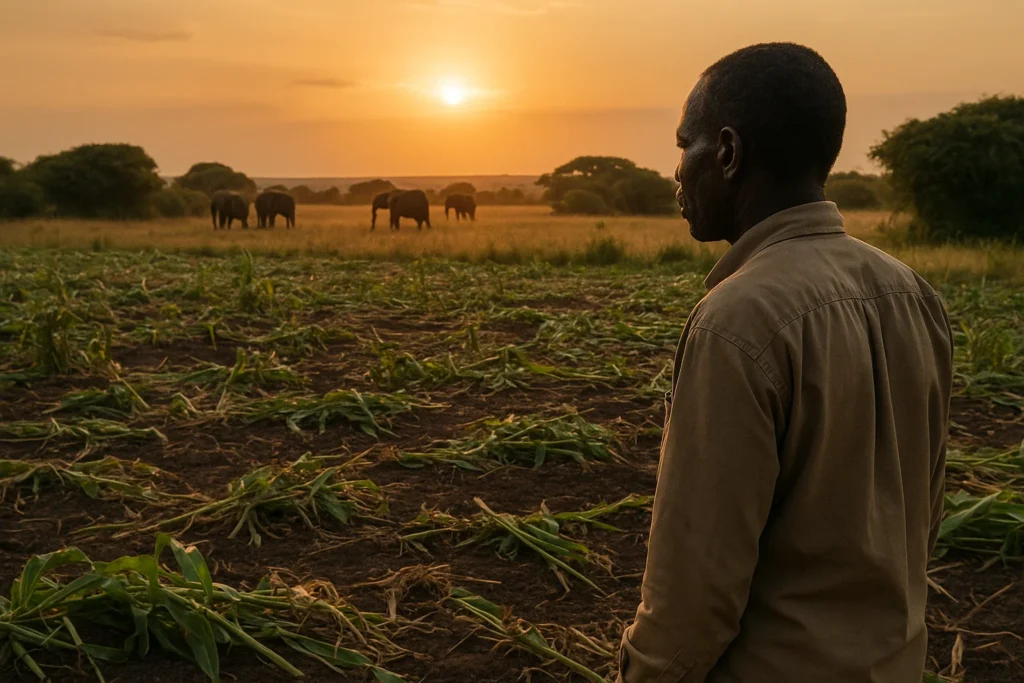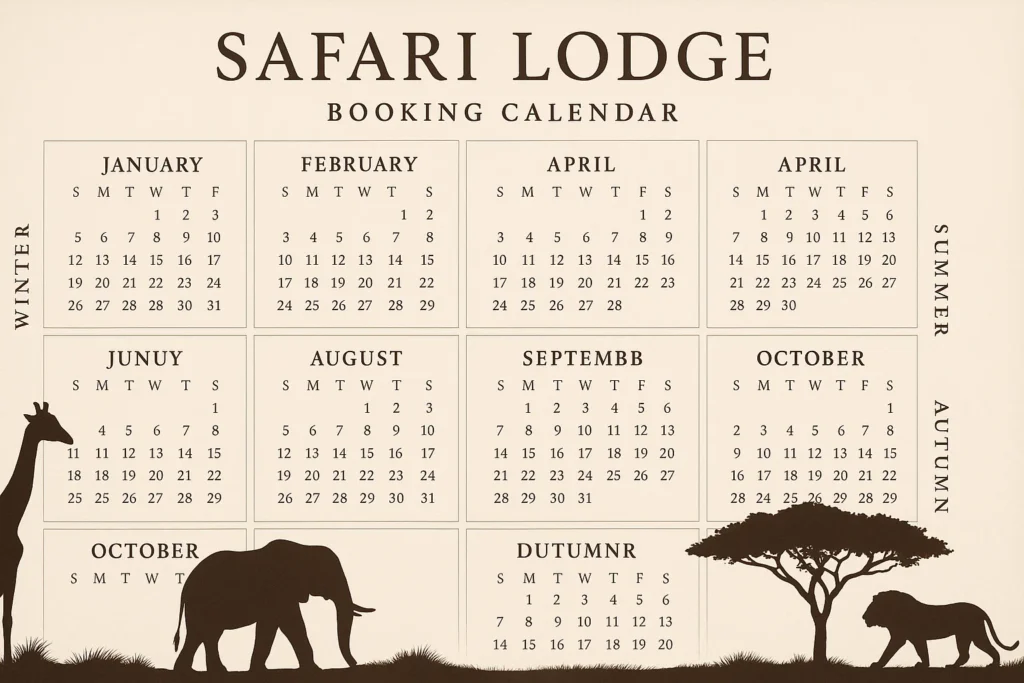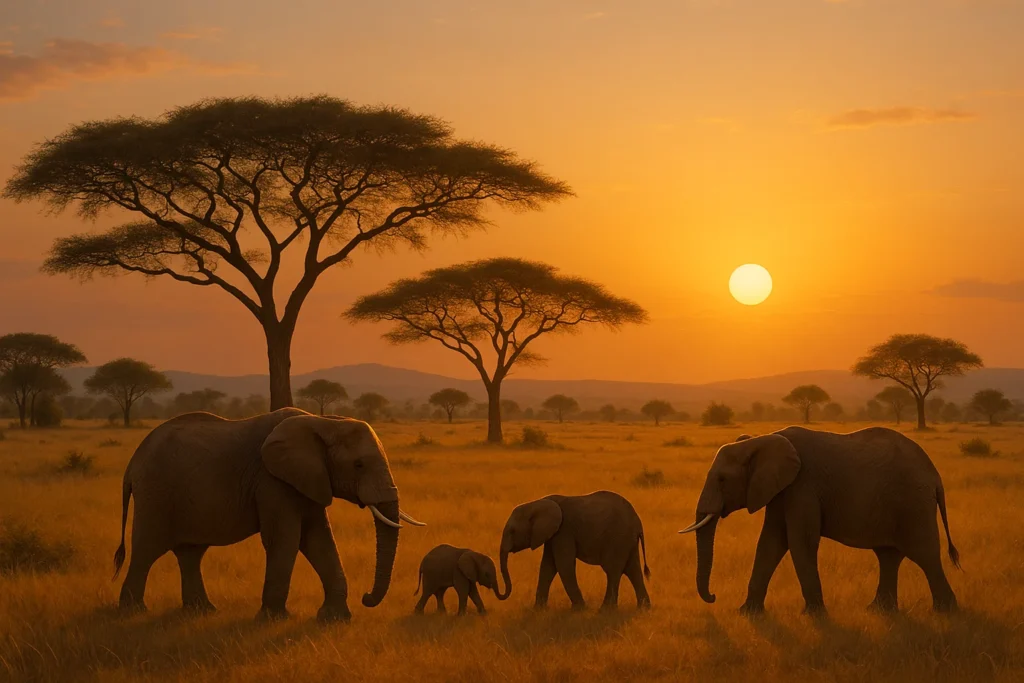Queen Elizabeth National Park (QENP) in western Uganda, spanning nearly 1,978 km², shelters diverse wildlife—from tree‑climbing lions and elephants to hippos and nearly 600 bird species. It is a UNESCO Biosphere Reserve, yet it remains a hotspot for human‑wildlife conflict (HWC) and complex conservation challenges that demand sensitive, multi‑layered solutions.
Human‑wildlife conflict: impacts and underlying causes
Crop raiding and livestock depredation
Local communities adjacent to QENP frequently suffer crop loss due to elephants and other wildlife, and livestock loss to lions and hyenas. A WWF assessment indicated that up to 25% of households report such incidents. Compounded by limited productivity (low-yield livestock, rapid population growth), losing even a few animals can devastate livelihoods and food security.
Fatal encounters and infrastructure incursions
Fatal human injuries caused by hippos, crocodiles, and lions are not unheard of. Eye‑opening accounts reveal communities feeling devalued: some victims go unacknowledged while wildlife receive symbolic priority.edepot.wur.nl Access roads through park buffer zones blur lines between human use and wildlife movement, heightening risk for both.
Poaching, retaliation and tension with authorities
Local traditions and poverty drive bushmeat hunting inside the park, often resulting in arrests or violent enforcement. Reports document rangers fatally shooting suspected poachers—even unarmed ones allegedly surrendering. This militarized approach breeds distrust between communities and Uganda Wildlife Authority (UWA). In retaliation, lion poisoning has occurred—killing not only predators but also vultures and hyenas.
Conservation status of predators and broader biodiversity impacts
Lion populations under pressure
QENP’s lions have declined by roughly 30% since the 1990s. Current estimates suggest only 50–65 lions in the northern sector and fewer than 20 in the Ishasha region. This trend jeopardizes their long-term viability and undermines the park’s role as an IUCN lion conservation unit.
Imbalances in carnivore dynamics
While lions shrink, some opportunistic species like spotted hyenas remain abundant. In neighboring Murchison Falls NP, hyena densities reach 45 individuals per 100 km². This imbalance may reflect disrupted trophic structure arising from human conflict and selective predator targeting.
Root causes and historical legacies
Land dispossession and heritage of marginalization
The Basangora and Bantu communities, indigenous to this landscape, suffered colonial-era dispossession: grazing lands revoked, livestock slaughtered, ancestral sites lost. Even today, enclave towns inside the park struggle for access and recognition.
Weak compensation systems and governance gaps
Communities cite delayed or absent compensation after wildlife incursions, with little recourse for personal or livestock loss. This undermines trust in UWA and the legitimacy of conservation efforts. UWA’s limited budget—especially post‑COVID—has hampered expansion of conflict mitigation infrastructure like electric fencing.
Solutions and best practices: integrated strategies toward coexistence
1. Compensation and community‑based incentives
- Forensic‑verified compensation: The Uganda Carnivore Program trialed direct payments tied to confirmed livestock depredations, helping stabilize lion numbers and improve community relations.
- Revenue‑sharing initiatives: Redistributing tourism income to local villages fosters a sense of ownership and incentive to protect wildlife.
2. Physical deterrents and landscape management
- Strategic electric fencing and trenches: Fencing key zones and maintaining trenches along park boundaries help deter elephants and other wildlife from crop zones. UWA continues to seek funding to expand this infrastructure.
3. Technology‑driven monitoring and early warning
- Satellite collars and biological sensors: Uganda Conservation Foundation and UWA partner to deploy GPS collars on elephants and lions, and even tagged vultures as biological indicators of illegal activity. Alerts feed into the EarthRanger platform for real‑time monitoring and response.
- Predictive patrolling tools: Machine learning systems like PAWS help identify poaching hotspots and optimize patrol routes—boosting detection by over 30%.
4. Community engagement, skills and education
- Livelihood diversification: Vocational training, beekeeping cooperatives, and eco‑tourism job creation help reduce reliance on bushmeat and traditional grazing. The Elephants, Crops & People project is a flagship example supported by UCF and UWA.
- Inclusive planning and justice frameworks: Conservation justice principles demand acknowledging victims of conflict, ensuring equitable decision-making, and remedying land injustices.
5. Policy reform and long‑term strategic planning
- Settlements within the park under review: UWA has proposed relocating 11 enclave communities that now house some 60,000 people inside QENP, arguing that sustainable coexistence is increasingly unsustainable as populations expand.
- National HWC management strategy: Uganda’s Ministry of Tourism, Wildlife and Antiquities has adopted a strategic policy (2023–2033) to guide conflict mitigation, capacity building, and stakeholder coordination.
Conclusion
Queen Elizabeth National Park stands at a critical crossroads. Traditional conservation tools—strict enforcement and protected boundaries—have delivered biodiversity recovery, yet at the social cost of alienation and injustice for local communities. The ongoing human‑wildlife conflict not only threatens carnivores like lions but undercuts the social license for conservation itself.
Sustainable coexistence demands multi‑pronged solutions: fair compensation, physical deterrents, technological innovation, economic alternatives, and inclusive governance that respects human rights as much as wildlife. Through coordinated efforts by UWA, UCF, international donors, and committed local communities, Queen Elizabeth can evolve from a story of conflict toward a model of balanced coexistence.
With the right policies, funding, and community participation, conservation in QENP can deliver both ecological resilience and social justice. Explore more deeply into this journey on WhySafari.com.
FAQs
Payments are tied to verified cases of livestock depredation confirmed by forensic evidence, and routed directly to affected households within weeks.
Properly installed fences deter wildlife without fatally harming them; they rely on short shocks that condition elephants to avoid crop areas.
Tagged vultures circle over carcasses; when they linger in a location, sensors and AI flag potential poaching events for investigation.
Relocation plans consider community input and propose alternative sites and support, though full implementation remains pending.
Yes, research shows hyena densities rise where lions are gone, potentially destabilizing food webs and affecting other species.






